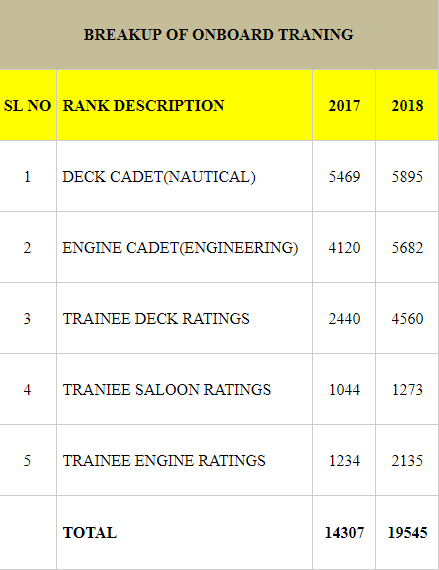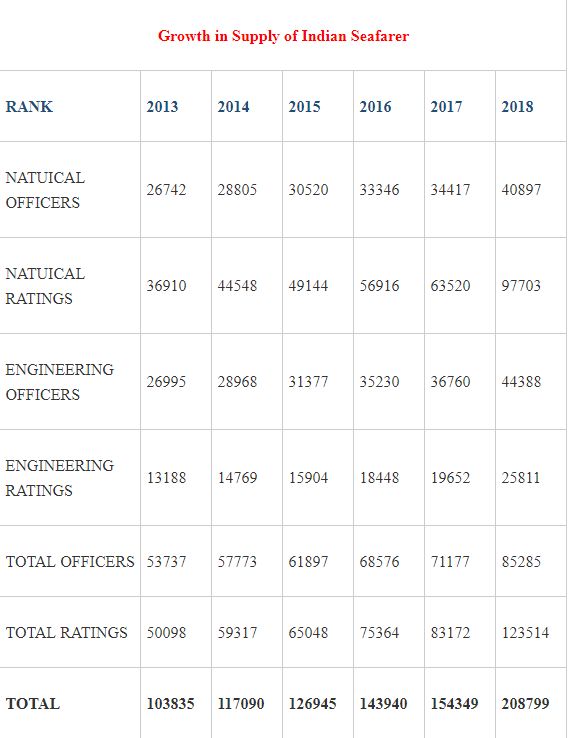The number of Indian seafarers employed on Indian or foreign flag vessels saw an unprecedented growth of 35% last year, according to data provided by the Indian Ministry of Shipping. The figure rose from 154,349 in 2017 to 208,799 in 2018. Along with this, the number of students placed for onboard training also increased from 14,307 last year to 19,545 this year, showing a jump of nearly 37%.
Key figures
- The number of seafarers employed on Indian flag vessels increased from 22,103 in 2017 to 27,364 in 2018, while the employment figures on foreign vessels went up from 60,194 to 72,327 during the same period.
- The total number of Officers employed increased from 60,194 in 2017 to 72,327 in 2018, while the number of Ratings during the period also increased from 72,052 to 109,108.
- The number of Indian seafarers had earlier gone up from 103,835 in 2013 to 126,945 in 2015.
This phenomenal growth in the number of Indian seafarers has been possible due to a series of measures taken by the Government in the last four years to improve the standards of maritime training, increase on-board training opportunities, improve the examination and certification system and facilitate ease of doing business.
These measures include the training curriculum for the officers and the ratings which were revised in 2016 to meet the expectations of the foreign employers. To regulate the training institutes working in private sector, a system of ‘Comprehensive Inspection Programme’ (CIP) was designed to assess the quality of the institute on various parameters such as infrastructure, quality of students’ intake, quality of faculty, pedagogy, performance in examination, on-board training and placement of students.
 Additionally, an e-learning module was prepared to standardize the course material of these institutes, and provided free of cost to all Indian seafarers to allow them to upgrade their knowledge and skills before appearing for the examination.
Additionally, an e-learning module was prepared to standardize the course material of these institutes, and provided free of cost to all Indian seafarers to allow them to upgrade their knowledge and skills before appearing for the examination.
To ensure increase in the supply side, a 15-year-old ban on setting up of new training institutes or increasing the capacity of the existing training institutes was lifted with certain conditions.
While India has created a large capacity in imparting class room training for Merchant Navy, there has been a major constraint in providing onboard ship training for the students enrolled for class room training.
A policy shift was made by holding the training institutes responsible for on-board ship training of the students also and not only for the class room training. To release more on-board ship training slots, it was decided to allow on-board training of officers and ratings on tugs and offshore vessels also. These two initiatives have opened additional berth for nearly 4,000 trainees.
Moreover, major regulatory relaxation was brought for obtaining Indian Continuous Discharge Certificate (CDC) which is a pre-requisite for employment on vessels. A new liberalized CDC regime was introduced in 2017 which allowed 10th pass Indian citizens who had completed a 14-day basic maritime course to obtain Indian CDC. Earlier, they were required to complete at least 6 months training for obtaining CDC.
Many seafarers having past experience in sailing have succeeded in procuring Indian CDC. More than 70,000 CDCs have been issued under new rules in the year 2018-19 itself.





























































